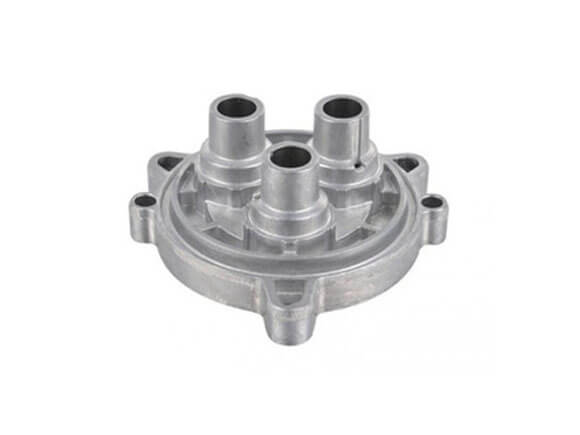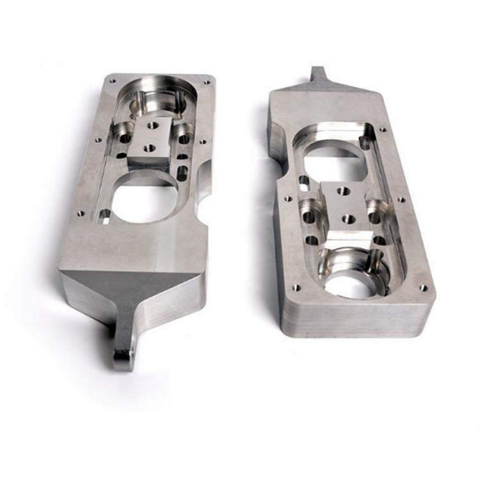Exploring how an Aluminum Foundry delivers cost-effective results
Exploring the Ingenious Procedures Behind Modern Aluminum Factory Procedures
Modern light weight aluminum factory procedures are going through significant makeover. Automation and AI are improving production methods, improving both efficiency and accuracy. The assimilation of 3D printing is streamlining mold and mildew creation, while sustainability methods are coming to be a lot more essential. Each of these developments plays an essential duty in redefining the market. The implications of these modifications expand past simple manufacturing efficiency. What obstacles and opportunities lie in advance for aluminum factories in this evolving landscape?
The Function of Automation in Light Weight Aluminum Foundries

In addition, automation adds to boosted safety criteria within the shop atmosphere. By transferring hazardous jobs to machines, human employees can concentrate on supervisory functions and quality assurance, reducing the threat of crashes. On top of that, data analytics stemmed from automated procedures offer valuable insights into functional performance, causing much better decision-making and constant renovation. As the need for light weight aluminum items expands, the fostering of automation technologies will likely increase, further transforming the landscape of aluminum shop procedures.
Advancements in Spreading Technologies
Recent improvements in casting innovations are changing aluminum shop procedures. Advancements such as 3D printing integration, advanced alloy solutions, and automated procedure optimization are improving performance and product top quality. These growths are critical in satisfying the evolving demands of the market.
3D Printing Assimilation
Incorporating 3D printing technology right into aluminum factory operations has actually reinvented traditional spreading techniques, improving both effectiveness and precision. This ingenious technique permits the rapid production of complex mold and mildews and cores, significantly decreasing lead times and material waste. By using additive manufacturing, factories can develop complex geometries that were formerly challenging or difficult to attain with standard strategies. The versatility of 3D printing additionally allows fast style modifications, fostering a much more agile manufacturing procedure. On top of that, this combination sustains using lightweight frameworks, which is increasingly important in markets such as vehicle and aerospace. As aluminum foundries proceed to take on 3D printing, they place themselves at the leading edge of technical development, driving improvements in item high quality and functional capacities.
Advanced Alloy Formulations
The growth of sophisticated alloy formulas has substantially enhanced spreading innovations in aluminum shop operations. These formulations incorporate different components, such as silicon, magnesium, and copper, to boost mechanical properties and thermal resistance. By tailoring the make-up of aluminum alloys, makers can accomplish details performance characteristics that fulfill the demands of diverse applications, from automobile components to aerospace structures. The usage of advanced alloys likewise adds to decreased weight and increased stamina, which are vital consider modern-day engineering. Additionally, developments in alloy growth enable much better fluidity during spreading, causing improved surface coatings and reduced defects. On the whole, advanced alloy solutions represent a considerable jump ahead, placing aluminum shops to meet the advancing demands of different sectors successfully.
Automated Refine Optimization
Improvements in casting modern technologies have actually led the means for computerized procedure improvement in light weight aluminum foundry operations. By integrating sophisticated software application and real-time data analytics, foundries can now simplify production procedures and boost top quality control. Automated systems keep an eye on variables such as temperature level, air conditioning, and pressure rates, enabling instant changes that minimize problems and waste. Furthermore, artificial intelligence formulas evaluate historical performance data to anticipate excellent settings, thereby raising performance and reducing cycle times. Robotics likewise play a considerable function, taking care of repetitive jobs that boost safety and precision. On the whole, these innovations not just drive operational efficiency but also make it possible for factories to satisfy the expanding demand for premium aluminum parts in numerous industries.
Smart Production and Sector 4.0 Combination
The integration of Smart Production and Market 4.0 within aluminum shops is changing functional effectiveness. By leveraging IoT modern technologies, automation, and robotics, factories can optimize manufacturing processes and lower downtime. In addition, information analytics gives vital understandings that boost decision-making and drive continual improvement.
IoT in Shop Operations
As producers significantly embrace the Web of Things (IoT), factory procedures are experiencing a transformative shift towards wise production and Market 4.0 assimilation. aluminum casting. IoT technologies enable real-time data collection and evaluation, improving decision-making processes and functional efficiency. Sensing units and connected gadgets keep an eye on equipment performance, product use, and environmental redirected here conditions, enabling positive upkeep and resource optimization. This connection cultivates a more dexterous production setting, where adjustments can be made swiftly in reaction to market demands. In addition, IoT assists in boosted traceability and quality assurance, as data from the whole manufacturing cycle can be quickly accessed and evaluated. Overall, the integration of IoT in factory operations substantially enhances efficiency and drives innovation in aluminum production processes
Automation and Robotics Integration
Automation and robotics combination is changing light weight aluminum foundry procedures by boosting performance and accuracy. This transformative strategy improves processes such as molding, pouring, and finishing, reducing human error and increasing output uniformity. By utilizing sophisticated robotic systems, foundries can accomplish higher manufacturing rates while keeping stringent quality standards. Automated systems also make it possible for real-time surveillance and flexible control, enabling speedy modifications to production specifications. Furthermore, the assimilation of robotics minimizes labor prices and reduces safety risks associated with manual handling of liquified metal. As shops accept smart manufacturing concepts fundamental in Industry 4.0, the harmony in between automation and robotics solidifies their one-upmanship, leading the way for lasting development and technology in the light weight aluminum casting sector.
Data Analytics for Efficiency
Utilizing data analytics greatly boosts efficiency within light weight aluminum factory operations, lining up with smart production and Sector 4.0 principles. By leveraging real-time data collection and evaluation, factories can check manufacturing procedures, forecast equipment failures, and enhance source appropriation. This data-driven approach promotes insightful decision-making, making it possible for managers to boost and recognize traffic jams operations. In addition, anticipating analytics equips shops to anticipate market demands, thus lowering waste and making sure prompt item delivery. Assimilation of data analytics with IoT tools enhances operational presence, fostering a positive maintenance culture. Inevitably, executing these sophisticated logical techniques not just increases efficiency but additionally drives innovation, positioning light weight aluminum foundries to satisfy the developing demands of the industry while keeping one-upmanships in a swiftly altering landscape.
Sustainable Practices in Light Weight Aluminum Casting
While the light weight aluminum casting market has actually typically dealt with ecological challenges, numerous factories are now adopting lasting methods to reduce their effect (Precision aluminum casting). A considerable focus has actually been on recycling light weight aluminum scrap, which not only decreases waste yet additionally preserves energy compared to main aluminum production. Cutting-edge melting modern technologies, such as induction heating systems, enhance energy performance and lower greenhouse gas discharges
Additionally, foundries are executing closed-loop water systems discover this info here to reduce water usage and decrease thermal pollution. Using eco-friendly binders in mold-making processes is obtaining traction, more reducing dangerous emissions.
Some centers are investing in sustainable power resources to power operations, straightening with worldwide sustainability goals. By incorporating these practices, the light weight aluminum casting sector is developing toward a much more eco responsible future, showing that financial growth can exist together with environmental stewardship - Aluminum Casting Company. These initiatives mirror a commitment to sustainability and the importance of ecological responsibility in manufacturing
High Quality Control Innovations
As the aluminum casting sector breakthroughs towards sustainability, the significance of quality assurance technologies comes to be significantly evident. Modern aluminum shops are embracing innovative innovations to enhance their quality control procedures. Techniques such as real-time tracking and data analytics permit producers to find incongruities and problems early in the production cycle. Implementing automatic assessment systems furnished with equipment discovering formulas assurances that items fulfill rigorous quality standards while reducing human error.
Furthermore, the assimilation of non-destructive screening methods, such as radiographic and ultrasonic evaluations, provides much deeper insights into the stability of castings without harming the product. These innovations not just enhance product integrity but also reduce waste, aligning with sustainability goals. On top of that, the fostering of standard top quality frameworks aids simplify procedures across different foundries, assuring consistency in outcome. Collectively, these developments are improving top quality control, promoting a culture of excellence within the aluminum spreading field.
Future Fads in Light Weight Aluminum Factory Procedures
What developments lie ahead for aluminum factory procedures? The future of light weight aluminum factories is positioned for change through improvements in automation, man-made intelligence, and sustainable practices. The combination of robotics and automated systems is expected to enhance efficiency and precision in the casting procedures, reducing human mistake and labor prices. Furthermore, AI-driven analytics will certainly allow real-time surveillance and predictive upkeep, optimizing functional efficiency and reducing downtime.
Sustainability remains a look at here now focal factor, with foundries increasingly taking on green methods, such as making use of recycled aluminum and creating low-emission melting technologies. Innovations in 3D printing are likewise prepared for to change mold-making, allowing for complicated geometries and decreased material waste. As the market welcomes digitalization, data-driven decision-making will certainly come to be essential, enabling factories to respond promptly to market needs. Collectively, these trends guarantee to redefine aluminum foundry procedures, making them a lot more efficient, sustainable, and versatile to future obstacles.

Often Asked Concerns
What Security Procedures Are Executed in Aluminum Foundry Operations?
Light weight aluminum factory procedures implement various precaution, consisting of personal protective equipment, air flow systems to take care of fumes, routine security training, emergency situation response strategies, and rigorous surveillance of temperature level and tools to avoid mishaps and guarantee worker safety and security.
How Do Shops Manage Labor Force Educating for New Technologies?

What Products Are Frequently Recycled in Aluminum Foundries?
Aluminum shops generally reuse scrap light weight aluminum, including post-consumer products like beverage containers, vehicle components, and building products. This recycling procedure reduces waste and saves resources, contributing to a more sustainable light weight aluminum production sector.
Exactly How Does Aluminum Spreading Influence the Setting?
Light weight aluminum casting impacts the environment via energy-intensive processes, greenhouse gas discharges, and prospective neighborhood contamination. Developments in reusing and sustainable methods can reduce these effects, advertising a more environment-friendly technique to light weight aluminum production.
What Are the Common Lead Times for Light Weight Aluminum Casting Projects?
Regular lead times for light weight aluminum spreading projects vary substantially, typically varying from 2 to 6 weeks. Elements influencing these timelines consist of complexity, order dimension, and product availability, affecting general production timetables in shop procedures.
Automation significantly plays a crucial function in aluminum foundries, enhancing efficiency and precision in the manufacturing procedure. Improvements in casting technologies have actually paved the way for computerized procedure improvement in aluminum shop operations. Taking advantage of data analytics greatly improves performance within light weight aluminum factory operations, lining up with wise production and Market 4.0 principles. A considerable focus has been on recycling aluminum scrap, which not only minimizes waste yet also conserves power compared to key light weight aluminum manufacturing. Light weight aluminum foundries commonly recycle scrap light weight aluminum, consisting of post-consumer items like drink cans, automotive components, and construction products.